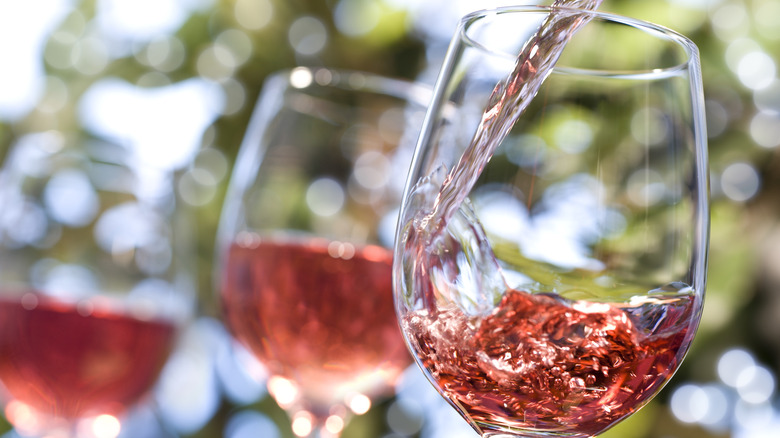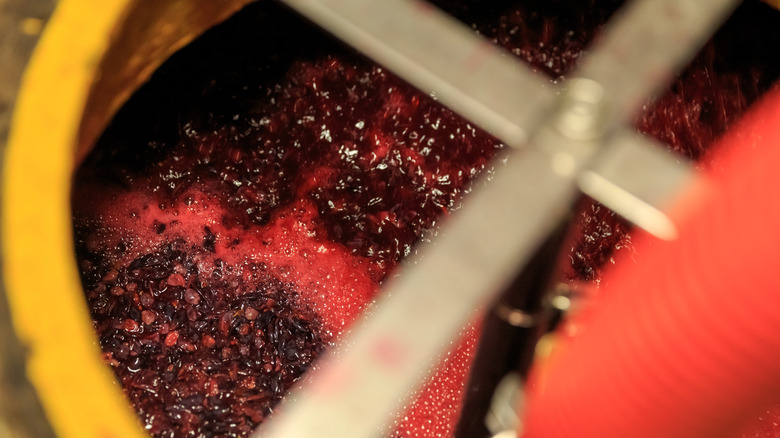Is Rosé Wine Just A Blend Of Red And White Wines?
Love it or hate it, the demand for rosé wine has skyrocketed in recent years, even though its origins date back centuries. Its frozen counterpart, the ever-popular frosé, is a common sight at backyard barbeques and Taco Bell Cantinas alike. Despite the soft pink color and floral-sounding name, this historic wine blend isn't just a mixture of red and white wines. While rosé can technically be a combination of red and white vintages, this blend is more commonly referred to as a "blush wine," not a rosé wine.
Blush wines are a combination of red and white wines, typically with a flavor profile that falls somewhere in between the two. It can be created either by mixing red and white wine at the end of the wine-making process or by combining red and white grapes during the fermentation process. Meanwhile, rosé wine, with its more complex and subtle flavors, gets its pink color during the maceration process, where crushed red grapes are left to steep for a short time with the skins before being strained off.
Rosé wine gets its color from red grapes
In the beginning, making rosé wine starts the same way that making red wine does. Rosé wine is most commonly created through maceration, a process where red grapes are mashed and left to soak with the skins until the wine takes on a pink color. The amount of time needed for this can vary from a few hours to a few days, which affects the pink shade of the beverage and leaves it anywhere between a dark berry color and a near-invisible pink. The longer the skins stay in the liquid, the darker the beverage. Each bottle of rosé wine is unique to the manufacturer and region in which the red grapes are grown, so if you're hunting for the best bottle of rosé, you should look for a label from Provence, France (otherwise known as the rosé wine capital of the world).
Blush wines, on the other hand, are mass-produced and known for being much sweeter than rosé wine. Think of a bottle of white zinfandel, perhaps the first kind of wine you could stomach as an early drinker, and remember how it didn't strangle your taste buds quite as much as a typical white or red. Besides a similarity in color, blush wines and non-blended rosé wines don't have much else in common. Rosé wines aren't generally made from combining red and white wine, but blush wines are. (Another quality that the two share? Pairing shockingly well with a bag of Cheetos.)

